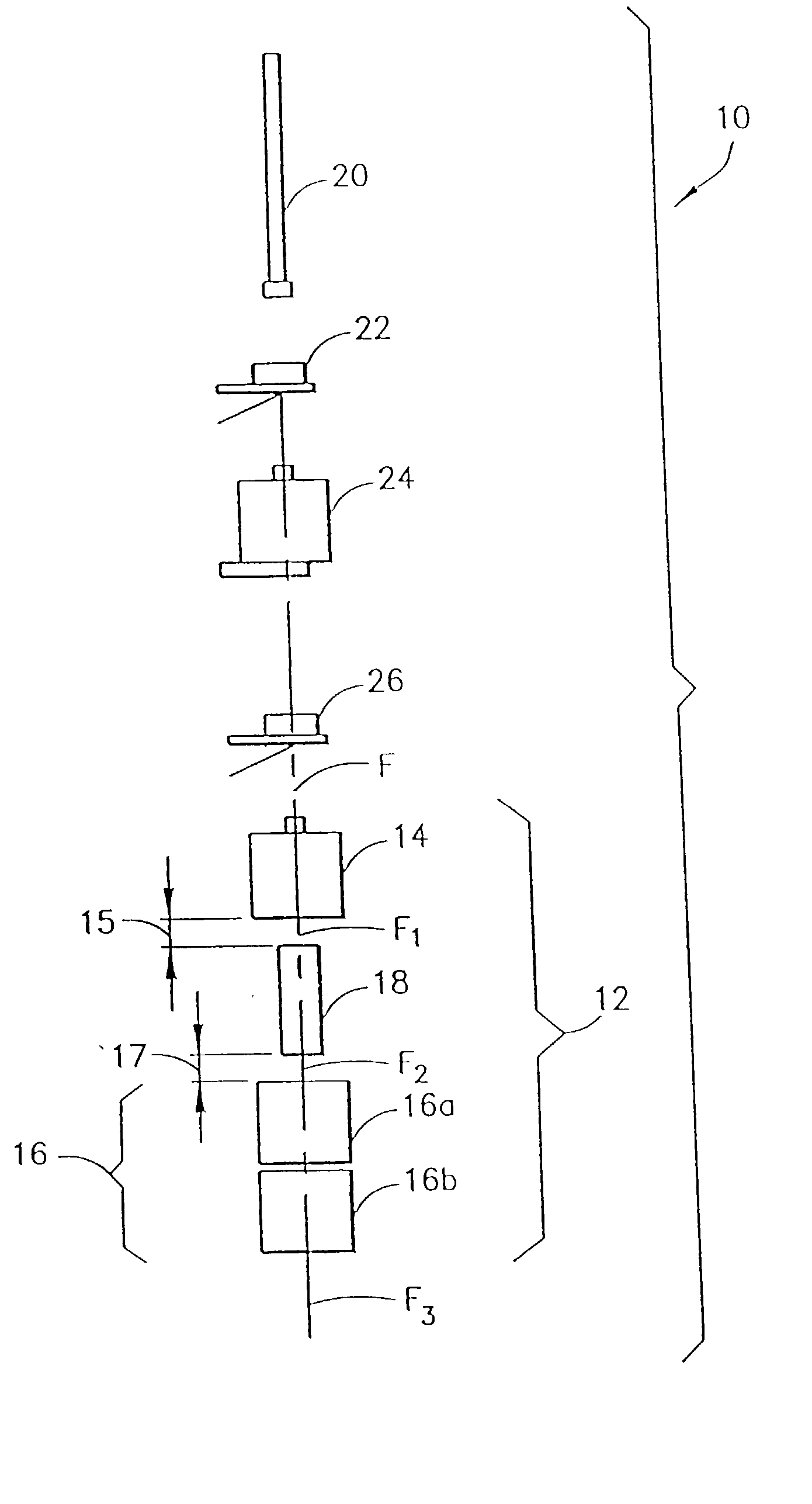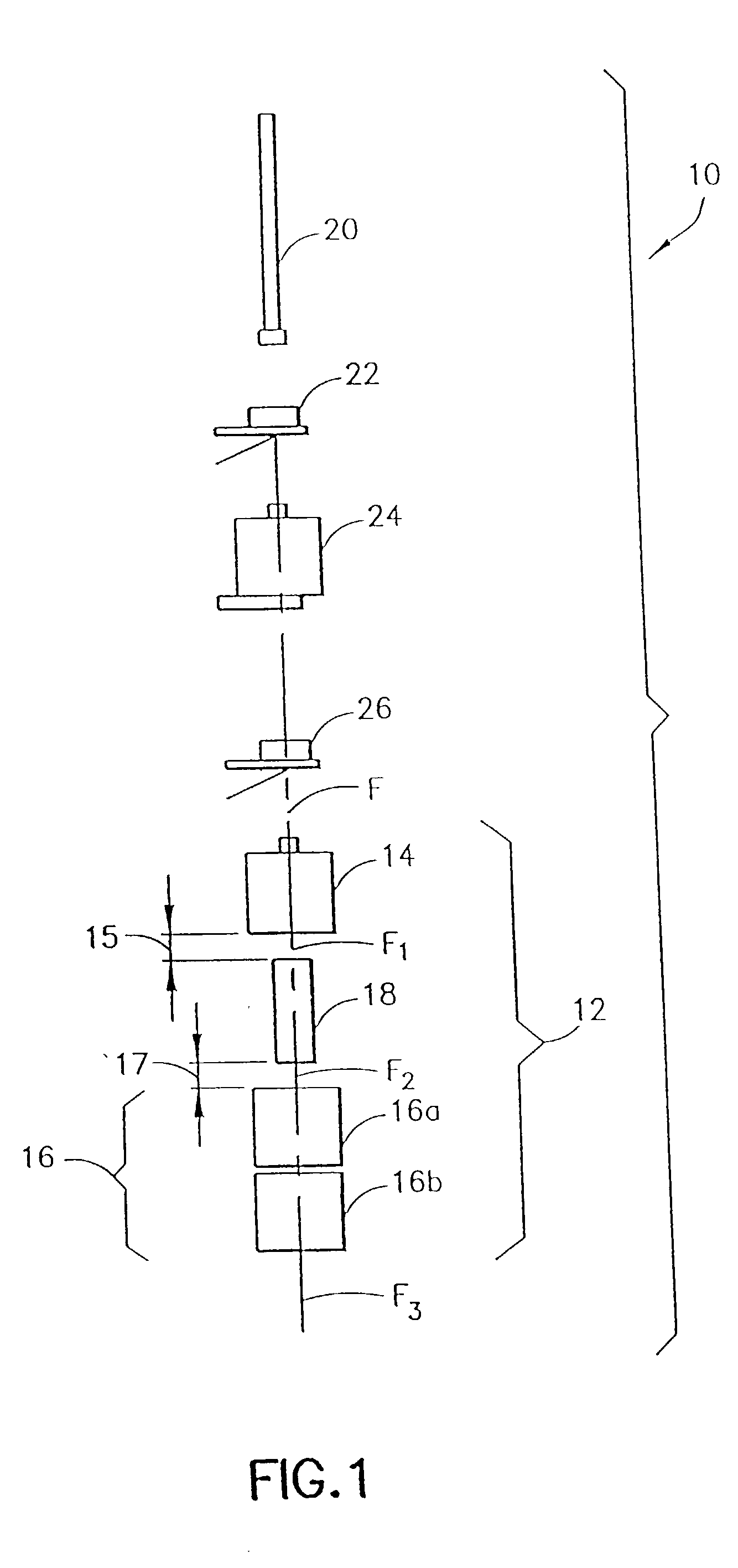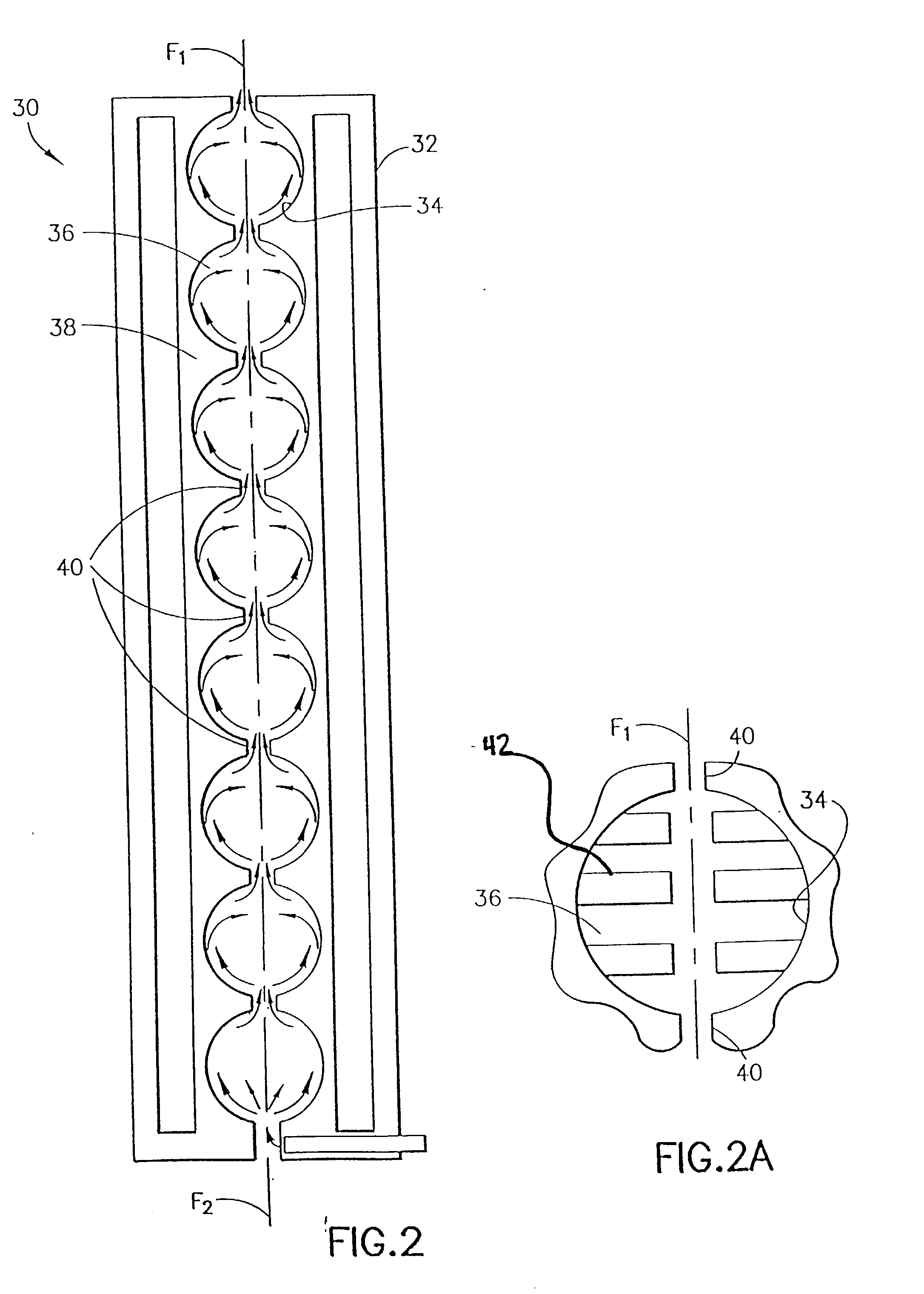Method and apparatus for curing a fiber having at least two fiber coating curing stages
a technology of curing stage and curing fiber, which is applied in the direction of lighting and heating apparatus, drying machines, instruments, etc., can solve the problems of not addressing the cure level of the coating, affecting the geometry and performance of the fiber in the optical fiber ribbon and cable structure, and not completely cure the uv curable coating applied to the optical fiber
- Summary
- Abstract
- Description
- Claims
- Application Information
AI Technical Summary
Benefits of technology
Problems solved by technology
Method used
Image
Examples
first embodiment
[0036] FIG. 1 shows an apparatus in accordance with the present invention for producing fiber generally indicated as 10. In its broadest sense, the invention consists of a method and apparatus that provides an improved UV curing stage generally indicated as 12 for curing a coated fiber F, comprising at least two fiber coating curing stages 14, 16 and a cooling stage 18.
[0037] As shown, the at least two fiber coating curing stages 14, respond to the coated fiber F, for providing a partially cured coated fiber generally indicated as F.sub.2, and further, respond to a cooled partially cured coated fiber generally indicated as F.sub.2, for further providing a cured coated fiber generally indicated as F.sub.3.
[0038] The cooling stage 18 responds to the partially cured coated fiber Fl, for providing the cooled partially cured coated fiber F.sub.2. The fiber coating curing stage 14 has one or more UV cure lamps. The fiber coating curing stage 16 has one or more UV cure lamps indicated as 1...
second embodiment
[0046] Turning now to FIGS. 5-9, the present invention will now be discussed. As stated previously, in addition to the benefits from cooling a fiber coating between curing stages (discussed above), the inventor of the present application has determined that spacing and / or the provision of dark-cure time between various curing stages can be beneficial in obtaining a complete fiber coating cure. Dark-cure time is defined as the period immediately following exposure to a UV lamp during which the polymerization reaction proceeds in the absence of initiating irradiation.
[0047] Most existing configurations of UV lamps for curing coatings on optical fiber draw towers (as well as other applications) stack UV lamps together on the spine of the draw tower. This can be seen in FIG. 8. It has been widely considered that the larger the number of the UV lamps used, the more complete the coating cure would become, as the line speed is increased. For example, it has been previously considered that ...
PUM
| Property | Measurement | Unit |
|---|---|---|
| time | aaaaa | aaaaa |
| time | aaaaa | aaaaa |
| time lapse | aaaaa | aaaaa |
Abstract
Description
Claims
Application Information
 Login to View More
Login to View More - R&D
- Intellectual Property
- Life Sciences
- Materials
- Tech Scout
- Unparalleled Data Quality
- Higher Quality Content
- 60% Fewer Hallucinations
Browse by: Latest US Patents, China's latest patents, Technical Efficacy Thesaurus, Application Domain, Technology Topic, Popular Technical Reports.
© 2025 PatSnap. All rights reserved.Legal|Privacy policy|Modern Slavery Act Transparency Statement|Sitemap|About US| Contact US: help@patsnap.com



